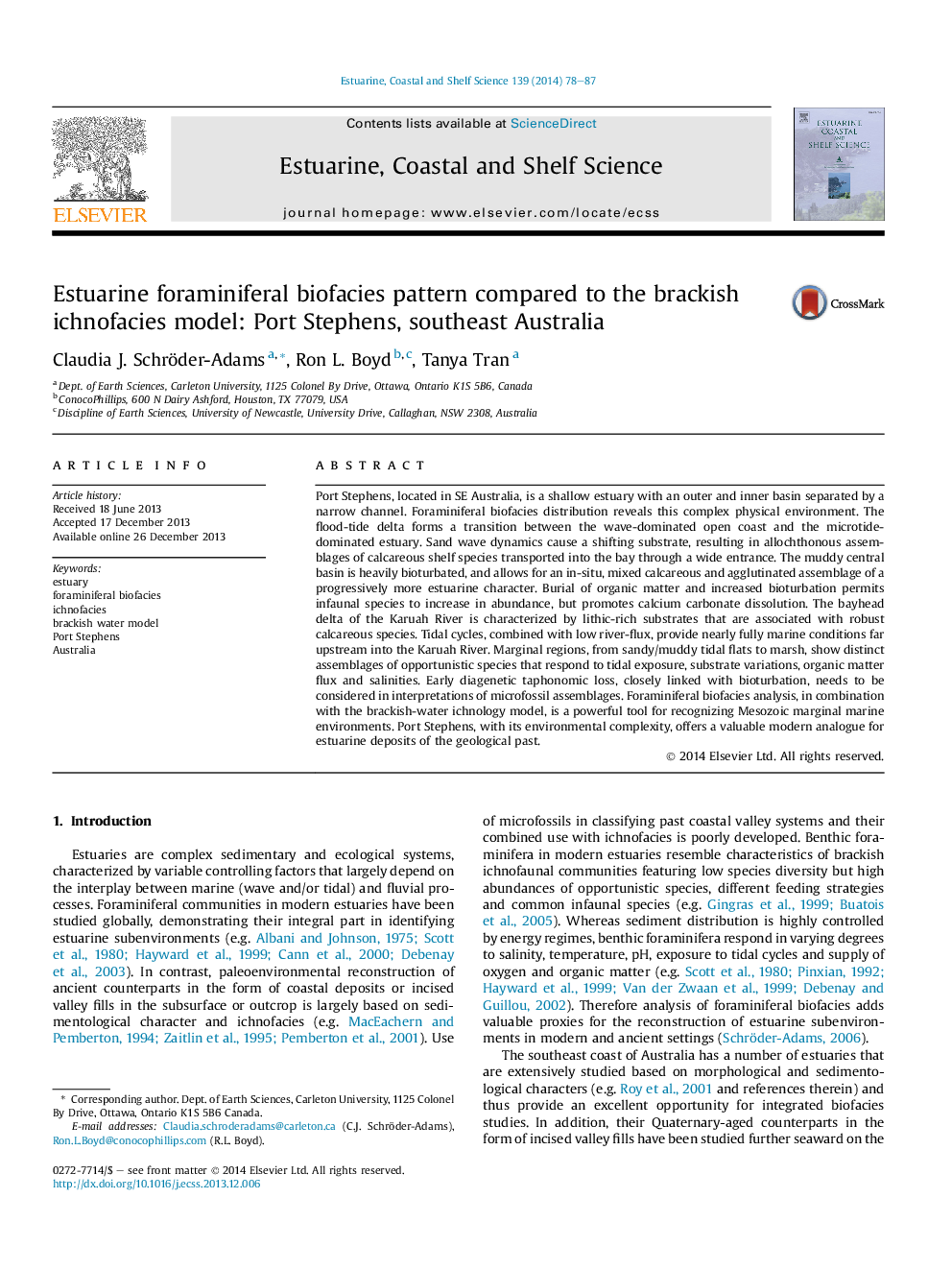| Article ID | Journal | Published Year | Pages | File Type |
|---|---|---|---|---|
| 6384967 | Estuarine, Coastal and Shelf Science | 2014 | 10 Pages |
Abstract
Port Stephens, located in SE Australia, is a shallow estuary with an outer and inner basin separated by a narrow channel. Foraminiferal biofacies distribution reveals this complex physical environment. The flood-tide delta forms a transition between the wave-dominated open coast and the microtide-dominated estuary. Sand wave dynamics cause a shifting substrate, resulting in allochthonous assemblages of calcareous shelf species transported into the bay through a wide entrance. The muddy central basin is heavily bioturbated, and allows for an in-situ, mixed calcareous and agglutinated assemblage of a progressively more estuarine character. Burial of organic matter and increased bioturbation permits infaunal species to increase in abundance, but promotes calcium carbonate dissolution. The bayhead delta of the Karuah River is characterized by lithic-rich substrates that are associated with robust calcareous species. Tidal cycles, combined with low river-flux, provide nearly fully marine conditions far upstream into the Karuah River. Marginal regions, from sandy/muddy tidal flats to marsh, show distinct assemblages of opportunistic species that respond to tidal exposure, substrate variations, organic matter flux and salinities. Early diagenetic taphonomic loss, closely linked with bioturbation, needs to be considered in interpretations of microfossil assemblages. Foraminiferal biofacies analysis, in combination with the brackish-water ichnology model, is a powerful tool for recognizing Mesozoic marginal marine environments. Port Stephens, with its environmental complexity, offers a valuable modern analogue for estuarine deposits of the geological past.
Keywords
Related Topics
Physical Sciences and Engineering
Earth and Planetary Sciences
Geology
Authors
Claudia J. Schröder-Adams, Ron L. Boyd, Tanya Tran,
